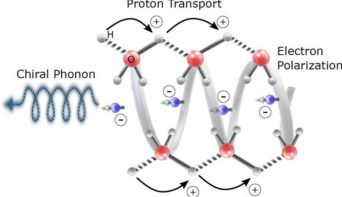
Using polymers that specifically bind serotonin, Patrick Wagner and co-workers have built heat-transfer sensors designed to diagnose depression. These small disposable devices can differentiate normal from pathological levels of serotonin, providing a cheaper method than the currently used high-pressure liquid chromatography (HPLC), which needs extensive equipment, trained staff and a laboratory environment. In contrast, the new sensor enables point-of-care testing in clinics and hospitals (Sensors 17 2701).
How it works
The sensor uses molecular imprinted polymers that specifically bind serotonin and are located at a solid-liquid interface. Whether or not serotonin is bound to the polymer changes its heat transfer properties. A copper block serves as the solid phase and is heated; the temperature is then measured in the liquid phase – the blood sample. The blood is heated less efficiently when the serotonin-bound polymer blocks heat transfer, thus providing a measure of serotonin levels. Wagner and his colleagues at the Hasselt University in Belgium were the first to use these heat-transfer sensors on biological samples.
The researchers made the synthetic receptors by synthesizing the polymer in the presence of serotonin and consequently removing the serotonin. The polymer was then ground to achieve maximum surface area and stamped onto an aluminium surface where it can bind serotonin from blood samples.
To increase its accuracy, the sensor has four sensing chambers that measure in parallel. To achieve stable readouts, an equilibration phase is needed both before and after sample addition. Nevertheless, the entire measurement can be performed within 15 to 20 min.
Serotonin imbalance
Serotonin is a chemical that nerve cells use to transmit signals and is involved in regulating mood, appetite and sleep. Low levels of serotonin have been linked to depression, the most common form of psychiatric disorder in Europe, which has a life-time prevalence of 15-20%. However, abnormal serotonin levels are also found in other conditions such as irritable bowel syndrome and hypertension.
But serotonin is not the only chemical that nerve cells use for signalling, and these other signalling molecules can look very similar to serotonin. To determine whether the new sensor can distinguish serotonin from other signalling chemicals, Wagner and his team tested it using histamine, a neurotransmitter that coordinates immune responses and nerve cells in the brain. Blood spiked with histamine instead of serotonin gave a baseline similar to that of a sensor without functioning receptors, indicating that the receptor is specific to serotonin and can distinguish it from other signalling chemicals.



